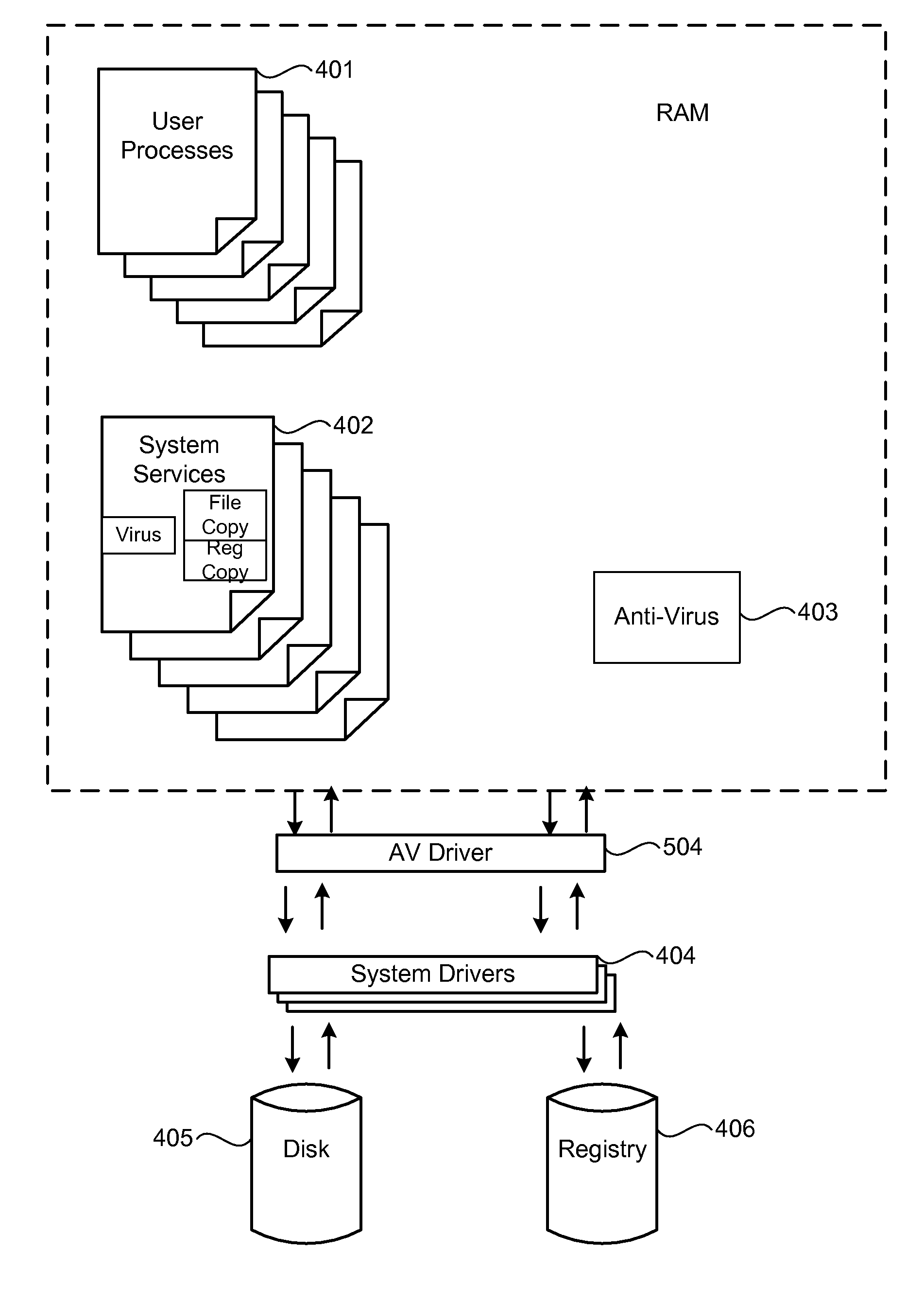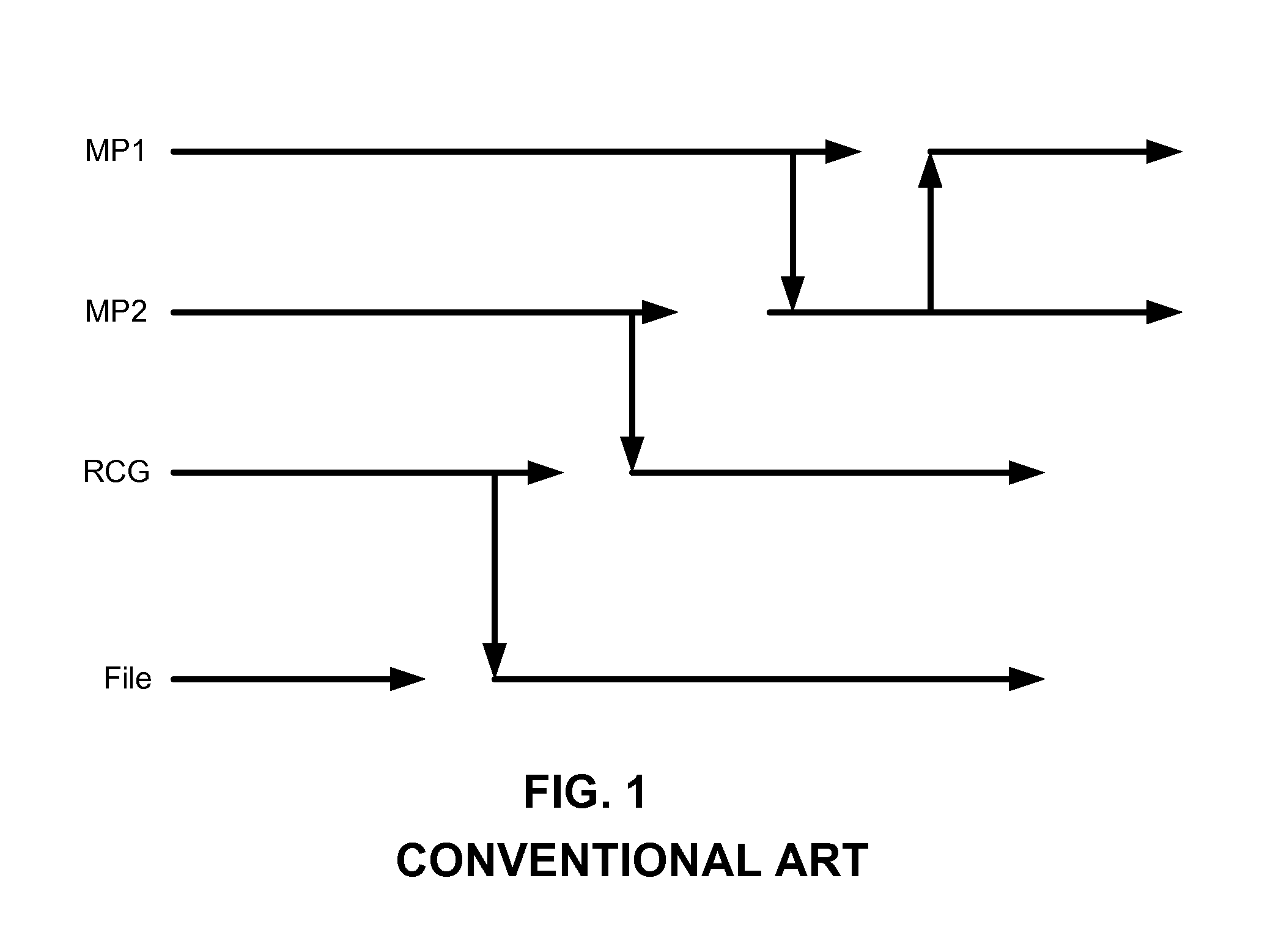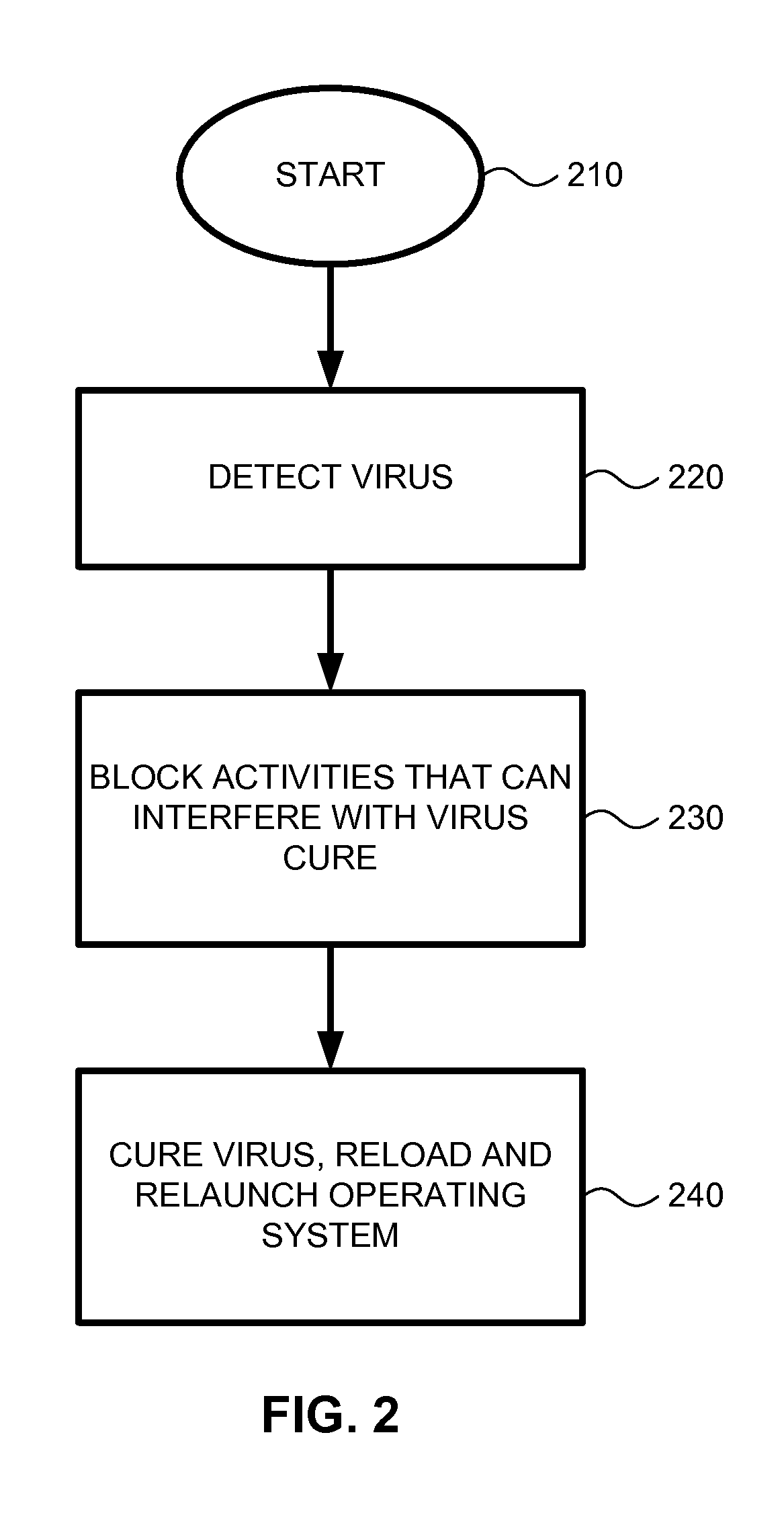Method and system for treatment of cure-resistant computer malware
a technology for computer malware and cure-resistant computers, applied in the field of antimalware technology, can solve problems such as data loss, computer and computer network serious threat, and the need for a complete restore of operating system and application data
- Summary
- Abstract
- Description
- Claims
- Application Information
AI Technical Summary
Benefits of technology
Problems solved by technology
Method used
Image
Examples
Embodiment Construction
[0029]Reference will now be made in detail to the preferred embodiments of the present invention, examples of which are illustrated in the accompanying drawings.
[0030]There are numerous ways for processes or threads to determine whether another copy of itself is running For example, a malicious process can create a global object, and periodically check for its existence. Such a global object is therefore used for synchronization among multiple instances of the malicious process. Memory mapped files is another mechanism that multiple copies of the same malicious process can use to maintain awareness of whether the other process has been terminated. Opening a window is still another variation on this theme, particularly where the window is a hidden window, or one that has all the attributes of a window, except for the fact that it is not actually displayed on the monitor. In sum, modern operating systems contain different mechanisms that permit multiple malware instances to maintain a...
PUM
 Login to view more
Login to view more Abstract
Description
Claims
Application Information
 Login to view more
Login to view more - R&D Engineer
- R&D Manager
- IP Professional
- Industry Leading Data Capabilities
- Powerful AI technology
- Patent DNA Extraction
Browse by: Latest US Patents, China's latest patents, Technical Efficacy Thesaurus, Application Domain, Technology Topic.
© 2024 PatSnap. All rights reserved.Legal|Privacy policy|Modern Slavery Act Transparency Statement|Sitemap



